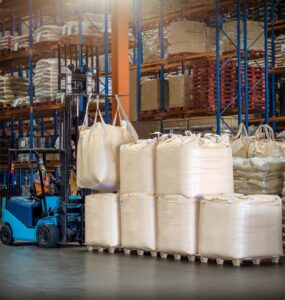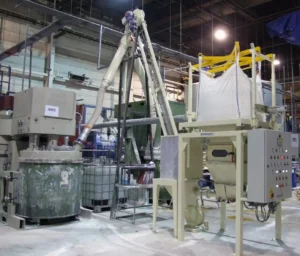When it comes to investing in new equipment, effective control of ingredients is a sector of food manufacturing that’s often given much lower priority than it deserves when compared to main process equipment. Yet if the fundamentals of ingredients handling are disregarded at the procurement and design stage, it can cause havoc to your production line. And while it may be obvious that the mechanical or vacuum conveyors, mixers, bulk bag unloaders, sieves etc. should be of robust construction and proven design, the control of their function is often the make-or-break element. It is important to ensure that your preferred supplier has a team of electrical (as well as mechanical designers) who understand your requirements and can provide sound advice and fast back up.
There are several points to consider if you wish to optimize production, reduce waste and minimize downtime. While a low-cost screw conveyor, sieve, and bag emptier may “do the job” for a short campaign, it will not satisfy future demands for flexible manufacturing or 24/7 operation and ultimately cost you in spare parts orders, hassle and downtime.
Effective Ingredient Handling
Let’s start with the ingredients themselves, which come in every conceivable form of powder, granule or flake with varying fat and moisture content. Flow properties vary beyond belief, from well behaved granular rusk to desiccated coconut that can form compacted clumps at the sight of a conveyor screw. Apart from overcoming these challenges by correct selection of mechanical equipment, a control system must be designed to monitor flow, detect variations or interruptions in feed rates, and adjust transfer rates accordingly. Otherwise, the process can be severely affected in terms of, for instance, the integrity of a mix of cereals, or the weight of additive being fed into a liquid tank. Additionally, data exchange from weigh controllers should be available if required to monitor and report fluctuations as well as act upon them.
Ensure all the following elements are considered and implemented at the outset to avoid costly problems down the line:
- If you don’t have a written control philosophy for your chosen supplier to follow, sort out exactly how the system should work to satisfy process requirements, operator input, batch cycles, cleaning regimes, NEMA or Atex considerations.
- Make sure the supplier has facilities to test your product to anticipate flow, smearing and hopper bridging problems, particularly if new ingredients are being introduced.
- Machine demonstrations at your supplier must reflect or simulate your process in terms of throughput rates or weight control. A short burst of your powder in a conveyor from A to B will tell you very little. Thorough testing, often trialing several conveyor types can determine screw profile, hopper design, level probes, valves, and much more. For bulk bag unloading trials, this will involve sending a full bag in advance of your visit. Bring your operatives to the demonstrations. Their input is valuable and often reveals day-to-day operational problems or maintenance aspects that might otherwise be overlooked.
- Is the ingredient density affected during the conveying cycle? Remember that aeration of a powder during a conveying cycle may affect the “settling time” or the amount that can be filled into a bag or weigh vessel.
- An ingredients handling and weight control system that is correctly designed for current demands and future changes should incorporate the latest technology including digital load cells and PLC-based weigh modules with HMI screens that allow for easy calibration of the weigh platform and modification of process variables. The weigh system will monitor and signal adjustments to feed rates, not only avoiding process errors but also avoiding waste by overfeeding of expensive additives. Tight control and attention to detail reduce downtime and the payback time on investment. Data collection and monitoring is no longer just an option for GMP (good manufacturing practice) but also the ability for a PLC to interface with downstream equipment and plant process control.
An equipment supplier with in-house control systems capability can provide remote diagnostics of problems and technical backup by phone, thereby avoiding the need for expensive call-outs by service engineers.
Due diligence in your choice of equipment and confidence in your supplier’s technical expertise will save you a lot of stress in the long run.





